(An Indian Express Group and Express Healthcare initiative)
Over 100 policy makers and stakeholders of public health came together at the first edition of Healthcare Sabha – The National Thought Leadership Forum on Public Healthcare. The two-day conference saw an interdisciplinary group of professionals working in public healthcare deliberate, discuss and debate on cohesive, unified and innovative ways to achieve the National Health Mission of providing ‘Universal Access to Equitable, Affordable and Quality Healthcare Services.’ Public health champions in India were also honoured at the Express Public Health Awards held concurrently Glimpses of the event …
Healthcare Sabha 2016 Day 1
- Inaugural ceremony
- Address by the Chief Guest
- Keynote address: Investing in health is investing in India’s growth
- Models of financing public healthcare to aid the masses
- Genomics in precision medicine
- Emerging threat of lifestyle diseases and their risk factors – Where are we today and the way forward to deal with NCDs as a public health priority
- Importance of evidence backed public health strategies
- Panel Discussion: Implementation of Universal Health Coverage/ Assurance: 4-point road map
- Improvising healthcare by implementation of Health Informatics Solutions
- Medicine procurement: Assumption versus assurance of quality
- Panel discussion: Best practices in Quality Procurement Management in the public health system
Inaugural Ceremony
Caption: (L-R) Viveka Roychowdhury, Dr Srinath Reddy, Dr Henk Bekedam, Dr Kenneth Thorpe and Navin Mittal
The 1st edition of Healthcare Sabha commenced on an auspicious note with the ceremonial lamp lighting ceremony by the Chief Guest, Navin Mittal, Secretary Finance & Commissioner & Ex-Officio Secretary, Information & Public Relations Department, Government of Telangana, and the Guests of Honour, Dr Henk Bekedam, WHO Representative to India, Dr Srinath Reddy, President, Public Health Foundation of India, Dr Kenneth Thorpe, Chairman, Partnership to Fight Chronic Diseases. Viveka Roychowdhury, Editor, Express Healthcare also joined them on the dais.
Supported by the National Health Mission (NHM) and the Government of Telangana, the two-day event was filled with interesting presentations and discussions to enhance the public health sector in India. It was attended by policy makers and stakeholders of public health from across the country.
Address by Chief Guest

– Navin Mittal, Secretary Finance & Commissioner & Ex-Officio Secretary, Information & Public Relations Department, Government of Telangana
Investing in health is investing in India’s growth

He pointed out that huge inequities exist in Indian healthcare. While a section of the population has access to top-quality healthcare facilities, a sizeable number of its citizens do not have access to even basic health amenities. He also lamented the fact that India, a rapidly growing country, still has a life expectancy rate of only 66 years and fares badly in comparison with its neighbours. In Bangladesh it is 71 years, while China had a life expectancy rate of 68 years back in the 1970s. He drew attention to the fact that India’s investment is just over one per cent of its GDP while drawing parallels with the investments made in its neighbouring nations. In China, it has risen to 3.5 per cent while Brazil, a BRICS country, invests five per cent of its GDP in health.
Dr Bekedam cautioned that if India’s doesn’t invest in health, there will be serious adverse consequences. People dying prematurely is not only a big loss to the family but also to the society. He also opined that India should have more emergency preparedness to deal with sudden health challenges. He revealed statistics from a study which proves that one additional year of life expectancy contributes to a rise in the GDP by four per cent. Analysing India’s Union Budget for 2016-17, he said that the increased investment in health was an encouraging sign. He also lauded the move to launch around 3000 generic medicine stores in the country (Jan Aushadhi stores) as well as the support extended to improve dialysis care in the country. He also appreciated the move to provide Rs one lakh coverage per family and additional coverage of Rs 30,000 for its senior citizens. However, he also pointed out that there has been no increase in the budget for NHM and no significant measures to deal with diseases like kala azar, malaria, TB etc.
He also advised improving public health and social health insurance to prevent people from slipping into poverty due to out-of-pocket expenses. He concluded by saying investing in human capital is very important to continue India’s growth story.
– Dr Henk Bekedam, World Health Organisation (India) Representative
Models of financing public healthcare to aid the masses
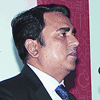
The second area for investment is insurance. As per Kumar, many state governments in India are introducing health insurance programmes to the poor, but India has to achieve Universal Health Coverage (UHC). He informed that though the government has begun efforts to achieve the same, this area require a huge amount of investment. Kumar says that the third area is the primary care system in India. He feels that the basis of any healthcare system is its primary care and huge investments are needed to strengthen this system.
Kumar opined that we require good models of financing to ensure the inflow of such investments. He said that the government should increase spending on healthcare but also suggested that CSR is a good model to fund healthcare. He revealed that currently CSR contributes to around Rs 20,000 crores in India of which around 26 per cent of this amount is spent on healthcare. Thirdly, he said that the private sector should be encouraged to invest in public health. He then pointed out the significance of public private partnerships (PPP) in healthcare. Pointing out that PPP-led healthcare delivery is currently only 10 per cent in India, he advised that all stakeholders in healthcare should work towards increasing this share to improve healthcare access.
– Chhitiz Kumar, CEO, Philips Capital & Head – Govt Affairs, PPP, Philips India
Genomics in precision medicine

He also elaborated on the trends in healthcare, and opined that personalised precision medicine has the capability to change the face of healthcare. He laid special focus on how genomics is driving drug discoveries across the globe.
He also emphasised that precision medicine backed by genomics will be the way forward. He provided insights on how genomics can be utilised in sectors like clinical research, pharmacogenomics, patient stratifaction, therapeutic monitoring, family screenings, prenatal and neonatal screenings, as well as other areas of diagnosis as well as prognosis. He said, there is an emerging ecosystem of innovative companies tackling specific problems related to human diseases using genomics-based approach.
Mehta also spoke on the genomic-led drug discovery market that is rapidly growing. Lastly, he stated that this market is estimated to be a $15 billion market in the next five years.
– Girish Mehta, CEO, MedGenome India
Emerging threat of lifestyle diseases and risk factors – The way forward to deal with NCDs as a public health priority

– Dr Damodar Bachani, Deputy Commissioner (NCD), Ministry of Health & Family Welfare, Government of India
Importance of evidence backed public health strategies

Moreover, she reminded that India does not have a good system to record the real causes of death of a person. The data that the government receives from hospitals and corporations on the birth and death registered is not properly documented. She then referred to the ‘million death study’ and said that India needs to undertake a verbal autopsy method to arrive at the proper cause of death of a person. Later she informed about ICMR’s measures to put a system in place with the help of information technology. ICMR intends to train doctors from atleast 50-100 medical colleges from across the country to properly and systematically record the real causes of death within the country. She also informed that ICMR is working with various experts to derive at the disease burden estimates within the states to help decision makers take informed and responsible healthcare decisions for their people based on proper facts and evidences. Finally, she laid emphasis on the value of Big Data and its application in healthcare decision making. She summed up her session by talking about an endeavour that the ICMR has embarked on to develop a repository to store different data sets from across the country to help facilitate better healthcare decisions in India.
– Dr Soumya Swaminathan, Director General, Indian Council of Medical Research, Government of India
Implementation of Universal Health Coverage: 4-point road map
Caption: (L-R) Dr Gullapalli N Rao, Chairman, LV Prasad Eye Institute; Mirai Chatterjee, Director, Social Security at Self-employed Women’s Association (SEWA); Dr Srinath Reddy, President, Public Health Foundation of India (PHFI); Dr Henk Bekedam, WHO Representative to India; and Dr PV Ramesh, Principal Secretary (R&E) Finance, Government of Andhra Pradesh





The panelists also deliberated on the measures to strengthen the primary care mechanisms in the country, utilising the available resources to do so. They also drew parallels between the initiatives implemented by various countries to improve access to medicines, wherein Dr Bekedam recommended subsidisation and cross subsidisation measures to improve healthcare access. The importance of capacity building and creating effective partnerships was also emphasised. Thus, several crucial points were highlighted and discussed at the panel discussion.
Dr Reddy concluded the discussion by saying that all said and done, these measures can be implemented in reality only if we build PWC i.e. political will and commitment.
Improving healthcare with Health Informatics Solutions

– Dr. BK Murthy, Executive Director, CDAC
Medicine procurement: Assumption versus assurance of quality

– Dr Suresh Saravdekar, Ex Assistant Director & Consultant – Procurement, Ministry of Medical Education and Health, Maharashtra
Best Practices in Quality Procurement Management in the Public Health System
Caption: Prof AK Gupta, Medical Superintendent, PGIMER, Chandigarh; Dr Suresh Saravdekar, Ex Assistant Director & Consultant – Procurement, Ministry of Medical Education and Health and Dr Avinash Supe, Director, Medical Education & Dean, KEM Hospital



The panel also discussed various challenges faced by medical practitioners and hospitals in verifying and guaranteeing the quality of drugs, over prescription of antibiotics and methods to prevent it, role of e-commerce platforms, dangers of self-medication, and the need to strengthen regulations and laws to safeguard quality.
Healthcare Sabha 2016 Day 2
- Power discussions on drug procurement process
- Keynote Address: SANKALP – DISHA SWASTHA BHARAT KI: Implementing a national blueprint on NCDs
- Mobile and Cloud Solution for comprehensive Primary Health Management
- Power of Open Source Software within the public health space
- Digitisation of public healthcare institutions: Challenges and successes
- Hospital administration: Challenges and innovations
- Digital medical imaging in public healthcare – Way forward
- PANEL DISCUSSION: Models of financing public healthcare
- Need for frugal innovation in medical technology
- Skill enhancement programmes to bridge the workforce deficit
- Models of financing oncology medicines
- PANEL DISCUSSION: PPPs in public healthcare: Expanding role of NGOs, Foundations and Corporate Hospital Outreach Programmes in TB control
- PANEL DISCUSSION: The role of frugal innovations in medical technology
Dignitaries discuss on drug procurement process at Healthcare Sabha
Healthcare Sabha 2016 also saw two power discussions, presented by Glenmark Pharmaceuticals. The discussions offered several insights and food for thought. The first one kicked off with AG Prasad, Vice President – Sales and Marketing, Glenmark Pharmaceuticals welcoming the 15 dignitaries from Mumbai. The topic before the house was ‘Partnering in Quality Procurement.’
The discussion began with Dr Suresh Saravdekar, Ex-Assistant Director and Consultant (hospital supplies procurement), Ministry of Medical Education & Health, State of Maharashtra pointing out the need for quality medicine procurement processes within public hospitals. He went on to say, “Equity in quality of medicine is of utmost importance. We, as key stakeholders working in the public health domain, need to come up with solutions that can harmonise the standards for medical procurement. Today, we have gathered here to come up with those solutions that can make a difference.” This comment got the ball rolling for the rest of the interaction.
Tarun Goel, Assistant Manager, KPMG, and Advisor to Maharashtra government said, “To ensure quality drug procurement, it is necessary to revisit the tenders that come in. Apart from this, quality checks is a must without which medicine procurement process is incomplete.”
Dr KBK Dora, Additional Chief Medical Director, Central Railways immediately responded to these suggestions and said, “We need to have a filtration process in place for (purchases of) all kinds of medicine and surgical equipment. This will ensure quality procurement.” Agreeing with this view, Dr Nirmala Barse, Deputy Dean, LTMG Sion, said, “This needs a change in mindset.”
Dr Prateek Rathi, Special Executive Officer and Surgeon, Employees State Insurance Scheme, Public Health Department, Government of Maharashtra then emphasised that the medical procurement process must be kept transparent. “Transparency can be maintained by bringing in a third party to check for quality and then uploading the results on the Internet for everyone to see.”
Sanjay Deshmukh, Additional Municipal Commissioner W S, Mumbai Municipal Corporation agreed with Rathi. He also endorsed the idea of using e-commerce to maintain transparency. Ram Bhau Dhas, Dy Municipal Commissioner (Z-III), Mumbai Municipal Corporation, replied saying, “We have to find all the loopholes in the current procurement mechanism and fix them so that we can improve the quality of drugs and equipment supplied to public healthcare institutes.”
Further, Dr Avinash Supe, Dean, KEM Hospital, Mumbai recommended that a random inspection system be introduced by the government to ensure quality procurement processes. He also suggested that the price control mechanism should be reviewed once again. This suggestion by Dr Supe was lauded by all.
Dr Alaka Deshpande, Former HOD – Dept of Medicine & Director, Center of Excellence, HIV/AIDS Management, JJ Hospital, said, “Quality is maintained within public hospitals as qualified doctors and healthcare staff conduct the procurement of medicines and surgical equipment.” Nevertheless, she pointed out that there is an
urgent need to have a cap mechanism to ensure highest standards.
Dr Yogesh Patil, Co-Founder & Director, Biosense Technologies, also criticised the raised turnover criteria in the medicine procurement process. He was of the opinion that there is a need to find a new mechanism (other than turnover) to identify innovation-based companies to provide high quality products at affordable rates.
To add more insight to the discussion and inform the dignitaries about the developments at the state government level, Dr Pravin Shingare, Directorate of Medical Education & Research, Government of Maharashtra, said, “Decentralisation of medical procurement should be stopped. There should be one agency who will look after the standardisation of the procurement process. Also, post procurement scrutiny is also required to ensure quality maintenance. Currently there is no control on the ageing of drugs.” He also pointed out that pharmacovigilance is crucial to provide good quality drugs to the people.
Goel chipped in, “Maharashtra will soon come up with its HMIS model to maintain transparency. The government is also adopting 5S and Kaizen for process improvement.” This news was appreciated by all at the discussion.
The next suggestion came from Ganesh Kanate, General Manager- Corporate Affairs, Glenmark. He urged the need for a dedicated PRO for each public health facility/ hospital as negative news about public hospitals is highlighted often, while positive news seldom get covered in the media. He therefore felt that if an agency is hired or a committee is formed, this could help disseminate the right information on the state of affairs within the public healthcare sector.
Prasad concluded the discussion by thanking all the dignitaries for sharing their views on this extremely sensitive subject and coming up with ideas that can give rise to apt solutions.
The success of the first power discussion set the tone for the second one which attracted state government officials from various states. The conversation was once again led by Dr Saravdekar, who asked the other dignitaries to talk about the drug procurement process in their own states. Dr Manjunath B, Medical Superintendent, KC General Hospital, Malleshwaram, Bengaluru under the Government of Karnataka, spoke about the drugs procurement mechanism maintained within his state. He also highlighted the problems which his organisation is faced with currently and requested for a solution to overcome it. “Money is allocated for increasing access to medicine; however, we are not able to utilise it properly,” he added.
Prasad agreed that under-utilisation of funds by state health departments is a real concern. He then touched upon the budget allocation for the healthcare industry in the Union Budget 2016-17 and made a point that in India we whine about the scarcity of funds but it is equally important to know whether these funds are efficiently utilised. “Most of the funds allotted to state and national programmes do not even get utilised. So to avoid such situations, both government as well as the private players should identify how to utilise it,” he stated.
Moving on, Dr Pradeep Naik, Dean, Goa Medical College explained the procurement mechanism followed by his hospital. He informed that in 2014, the Goa government formed a common drug purchase committee to ensure quality drug procurement process and maintain high standards. “The core responsibility of the committee was to follow the National List of Essential Medicines (NLEM) list and procure medicines. However, the committee has also prepared non-NLEM drugs list and shared this with all public hospitals located in Maharashtra”.
Adding his views, Dr Shankar L Vig, Deputy Medical Commissioner, ESIC, briefed about the criteria adopted and followed by the ESIC for ‘Not of Standard Quality’ drugs and non supply of drugs. “We have a centralised committee that looks after this process. We follow a two-step standardisation process for quality checks,” he informed.
During the discussion panelists also discussed how pharma manufacturers are not willing to manufacture certain drugs under price control which leads to scarcity of medicines in the market. For instance, Dr Atul Kharate, State TB Officer & Joint Director Health Services, Government of Madhya Pradesh raised concerns on the drug procurement process for TB treatment. He revealed that some TB drugs are not available in Madhya Pradesh and hence even the Revised National Tuberculosis Control Program (RNTCP) is facing many problems when arranging for certain drugs to treat TB. Dr PK Devadass, Dean and Director, Bangalore Medical College and Research Institute echoed Kharate’s point that he and his institution find it difficult to procure drugs.
At the end of discussion, the participants were unanimous in their conclusion that functional integration is key to quality drug procurement in India. Dr Prathajyoti Gogoi, Director, Regional Drug Testing Laboratory, CDSCO, DGHS, Ministry of Health & Family Welfare, Government of India, summed up the discussion saying, “Healthcare Sabha has highlighted several problems being faced by stakeholders working in the public health domain. I assure you that I will discuss these issues at the ministerial level and present some solutions that have surfaced during our discussion.”
Sankalp – Disha Swasth Bharat Ki: Implementing a national blueprint on NCDs

– Dr Kenneth Thorpe, Chairman, Partnership to Fight Chronic Disease (PFCD)
Mobile and Cloud solutions for primary care management

– Sunita Nadhamuni, Head – Healthcare Solutions, EMC Software and Services India
The power of open source software in the public health space

Secondly, Singh spoke about the economics of utilising open source within the public health domain. He explained the myriad advantages offered by the open source platform if it was efficiently adopted and managed. He also spoke on how open source can be utilised in the digital health space by comparing three well-known softwares used for maintaining electronic health records, healthcare management and health information exchange.
Singh also presented a case study from Bangladesh that highlighted how open source software enhanced a healthcare information platform. He summed up saying that India certainly needs to go the open source software route to provide better healthcare delivery to its people.
– Vivek Singh, Technical Architect, ThoughtWorks
Digitisation of public healthcare institutions

Dr Agrawal said that ensuring transparency and accountability were the key problems in hospitals. Hence, the focus while digitising the operations at AIIMS were on these two areas. The team also developed a model that can be replicated across the country. The other focus of this team was to improve patient satisfaction, an area which is often neglected in the public health domain. He also spoke on the various challenges faced by him and his team during the project.
Dr Agrawal also enumerated on a few strategies that he and his team implemented at the hospital. One among these, was starting a call centre at the hospital to improve patient satisfaction. The other strategy was to have an audit in place to improve efficiency of the doctors and support staff. The hospital also developed a system that was tamper-proof to handle medico-legal cases, medical records of patients. He claimed that this strategy was appreciated by many state governments in India and the model will soon be replicated at many government hospitals across the country. He spoke on the patient display system they installed in the emergency ward and AIIMS’ patient appointment system which have helped improve their operations and care delivery. He summed up by saying that these strategies have helped the hospital to benchmark its services.
– Dr Deepak Agrawal, Head IT, AIIMS
Hospital administration: Challenges and innovations

Prof Gupta presented another case study which helped them reduce the average length of stay within the hospital and explained how a decision support system (DSS) helped the hospital to optimally utilise their resources and thereby reduce the patients’ hospital stay while offering them better care. He concluded by recommending the adoption of smart innovations as they positively impact the hospital’s functioning.
– Prof AK Gupta, Medical Superintendent, PGIMER Chandigarh
Digital medical imaging in public healthcare – The way forward

Jose also highlighted the challenges in increasing access within the public health domain. Providing solutions to these challenges, he elaborated on how India can make the best use of the available resources by making them more productive and recommended doing it with the help of digitalisation. He cited an example of how a radiology department can be efficiently run with less number of technicians through digitalisation. He said that it would also help in getting optimal results and diagnose more number of patients.
Jose also opined that digitalistion is a building block for creating an effective healthcare delivery system in India. Further, he presented a video that explains how a digital radiology system works. He also elaborated on how it enhances the productivity of a radiology department and how the digitalised data from the three to four hospitals’ radiology departments can be integrated using a cloud platform. Moreover, Jose spoke about effective digitalisation of a PACS unit to increase efficiency within the hospital and how PACS can be integrated with cardiology, endoscopy, dental and many other vital departments within a hospital. He summed up the session by explaining Carestream Health’s offerings in the public health space.
– Sabu Jose, General Manager, Government Accounts, Carestream Health India
Models for financing public healthcare
Caption: (L-R) K Srivatsava, VP Marketing and Sales, NATCO Pharma; Dr Anant Phadke, Senior Advisor, SATHI-CEHAT; Dr Prateek Rathi, Special Executive Officer, ESI Scheme, Department of Public Health, Maharashtra; Kavita Singh, Director NHM (Finance), MoH&FW, GOI; Chhitiz Kumar, CEO Philips Capital& Head-Government Affairs, PPP Philips India;





The panelists also discussed on the inefficiencies within the system and finally came to a conclusion that a multi-financing model will be beneficial to build a strong healthcare system in India. Dr Rathi summed up the discussion by saying that the government has to increase its spending, decrease inefficiencies within the system, maintain transparency and create synergies.
Frugal innovations in healthcare

Pandey stressed that there is a dire need for frugal innovation in healthcare as they not only help the poor patients to get access to healthcare at a cheaper cost but also fosters a healthy ecosystem for start ups in India. Further on, he mentioned that India’s start up culture is growing, especially in the healthcare sector with several good example sof frugal innovations coming up in this space. Start ups in the healthcare space are continuously working hard to come up with innovative devices which would bring down costs yet improve health access. He opined that most of these innovations are coming up in the fields of ophthalmology, cardiology, diabetes and infectious diseases.
Pandey also pointed out to the measures by the Chinese government to start ups and other medical devices companies to come up with medical innovations. Lauding the efforts, he said that today, China has a thriving medical innovation culture. He concluded his session with a call to all stakeholders to come together and encourage frugal innovations in healthcare. He said that this will also boost medical tourism is India, solve many healthcare challenges and improve the quality of life of the people in India.
– Gyanesh Pandey, Chairman and Managing Director, HSCC
Skill enhancement programmes to bridge workforce deficit

Prof Sodani began with informing that the WHO has recommended six essential building blocks for strengthening the healthcare system of countries across the globe. Governance, health information, financing, human resources, medical technologies and medicines are the six building blocks that can strengthen any healthcare system, he informed. According to Prof Sodani, an effective workforce is that which is available when needed, competent enough to perform their duties, responsive enough to the task given to them and be productive. Human resource occupies around 47 per cent of the health budgets globally. Therefore, managing the health workforce in country is very important. He referred to a study and said that less motivated workforce delivers poor quality of healthcare service.
Prof Sodani also spoke about the need to create a good density of workforce and said that when a country has a high density of workforce, the nation has a strong healthcare system. Further, he pointed out that India needs to increase its workforce within the National Health Mission and focus on getting the right mix of people to work in this area. He also advised that India needs to increase the number of skill development centres within the healthcare space and changing the training content of skill development programmes to improve their efficacy.
– Prof PR Sodani, Dean (Training), IIHMR University
Models of financing oncology medicines
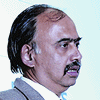
Srivatsava further urged the audience to focus their efforts on building a strong healthcare system for cancer care in the government sector. He then suggested the introduction of equated monthly installment (EMI) schemes for cancer care. He said that currently 25-30 per cent of patients get cancer treatment, but with the introduction of EMI schemes, more percentage of cancer patients will be in a position to avail treatment. This will also provide better adherence to cancer care in India and ensure completion of the therapy, he stated. Additionally, he explained how the EMI scheme works within the healthcare sector. Srivatsava also informed that so far the EMI scheme is working well in cardiac care, early 550 loans have been availed in India for cardiac care. If this scheme is implemented effectively in oncology care, it can certainly make a huge positive impact and more patients can be cured of cancer in India.
– K Srivatsava, Vice President – Marketing & Sales, NATCO Pharma
Expanding role of NGOs, Foundations & Corporate Hospitals’ outreach programmes in TB control
Caption: (L-R) Dr Sreenivas A Nair, National Professional Officer-Tuberculosis, WHO, Country Office for India; Dr Atul Kharate, State TB Officer/ Joint Director Health services, Government of Madhya Pradesh; and Dr Aravind Swaminathan, Paediatrician, MSF
This panel discussion focussed on the enormity of TB as a public health concern and the role that prolific partnerships between private and public stakeholders of health can play in tackling this threat effectively.



The panel also discussed the challenges in TB care and the way forward for managing the disease in the best possible manner. The moderator concluded the session with an appeal to the media to be more sensitive and responsible when it came to TB reporting.
Role of frugal innovations in medical technology
Caption: (L-R): Dr Yogesh Patil, COO, Biosense; Mihir Shah, Founder and CEO, UE LifeSciences; Dr Jitendra Kumar Sharma, Director, WHO collaboration Centre for Priority Medical Devices & Head, Division of Healthcare Technology, National Health Systems Resource Center, MoH&FW; and Dr Pankaj Parashar, Director & General Manager. MP Public Health Services Corporations
The last panel discussion of Healthcare Sabha 2016 focussed on increasing healthcare accesibility and affordability with the help of frugal innovation. The moderator of the session Dr Jitendra Kumar Sharma, Director, WHO collaboration Centre for Priority Medical Devices & Head, Division of Healthcare Technology, National Health Systems Resource Center (NHSRC), MoH&FW highlighted how frugal innovations can mitigate the challenges that hinder us from achieving Universal Health Coverage. He touched upon subjects related to effective implementation of health diagnotics programmes, use of teleradiology in increasing access to public health, importance of public private partnerships (PPP) in healthcare and what role frugal innovations play in optimising public healthcare delivery.




Finally, the panel came to the conclusion that Indian innovators, along with other stakeholders of health, will have to work together to mitigate the challenges in scaling up innovations and increasing their reach to the masses.
EXPRESS PUBLIC HEALTH AWARDS
- Welcome Address
- Chief Guest Address
- The future of public health in India: Suggestions for moving from MDGs to SDGs
- Felicitation Ceremony
Public Health Champions honoured at Express Public Health Awards
Public Health Foundation of India and Glenmark join The Indian Express Group and Express Healthcare in this endeavour

The Express Public Health Awards sought to honour the visionaries, innovators, and game changers in India’s public healthcare. It began with a welcome address by Viveka Roychowdhury, Editor, Express Healthcare. She spoke on the vision behind the awards and expressed her thanks to Public Health Foundation of India, the Knowledge Partner and Glenmark, the Presenting Partner.
Dr Srinath Reddy, the Chairperson of the jury for Express Public Health Awards took the stage to explain the concept and the need to encourage initiatives that help improve public health in India.
Dr Akun Sabharwal, Director, Drug Control Administration, Telangana was the Chief Guest at Express Public Health Awards. He spoke on the initiatives to improve healthcare in his state and emphasised on the need to improve access to medicines in the country.
This was followed by the felicitation ceremony. The winners were as follows:
- Express Public Health Award for Efficiently Run Public Health Programmes by a State: It went to the State Government of Chhattisgarh for innovative initiatives in developing human resources for health aimed at improving outreach of services to difficult to reach populations, exemplified by the Mitanin programme, operationalisation of SNCUs and incentivising health personnel in extremism affected areas.
- Express Public Health Award for the Most Effective Public Private Partnership: It was given to HLL Lifecare, Tamil Nadu for their exemplary initiative in producing low cost sanitary napkins, for promoting affordable menstrual hygiene for adolescent girls and women.
- Express Public Health Award For The Most Effective Healthcare NGO: Nari O Shisu Kalyan Kendra, Howrah received this award for effective community action to overcome resistance to polio vaccination and routine immunisation, and increasing coverage rates through impactful behaviour change.
- Express Public Health Award for the Most Effective Health Technology System: All India Institute of Medical Sciences (AIIMS), Delhi won this award for operating an efficient online appointment system for OPD services, resulting in high levels of patient convenience and satisfaction Postgraduate Institute of Medical Education and Research (PGIMER), Chandigarh received it for developing innovative health information management software for optimising average length of stay for patients in hospital, thereby decreasing costs and increasing turnover.
- Express Public Health Award for Lifetime Achievement Award for Contribution in Public Health: It went to SEARCH, Gadchiroli for path breaking contributions to community – based healthcare of children and women, with impactful research-led programmes of health service delivery in a developmentally backward region of rural Maharashtra.
- Jury Choice Award For Socially Responsive Healthcare Delivery by Private Institution: It was jointly awarded to Aravind Eye Care System, LV Prasad Eye Institute and Sankara Nethralaya for inspirational leadership in providing high-quality eye care to millions through pro-poor services extending from hospitals to communities.
- Jury Choice Award For Corporate Contributions To Public Health: GVK-EMRI was given this award for providing emergency health transport services across the country, through an innovative PPP model.
Piramal Swasthya Management Institute also won in this category for providing health information helplines and mobile diagnostic services in several states, through PPP models.
The evening came to a close with a Vote of Thanks to all the jurists, Dr Srinath Reddy, President, PHFI; Keshav Desi Raju, Former Secretary, in MoH&FW; Dr Jayaprakash Narayan, former Member of National Advisory Council (NAC), and Second Administrative Reforms Commission (ARC); Dr Leila Varkey, Senior Advisor-RMNCH, Centre for Catalysing Change as well as all the dignitaries who were part of the two-day summit.
The most Efficiently Run Public Health Programmes by a State
State Government of Chhattisgarh
The Most Effective Public Private Partnership
HLL Lifecare, Tamil Nadu
The Most Effective Healthcare NGO
Nari O Shisu Kalyan Kendra, Howrah
THE Most Effective Health Technology System
AIIMS, Delhi
THE Most Effective Health Technology System
PGIMER, Chandigarh
Lifetime Achievement Award for Contribution in Public Health
SEARCH, Gadchiroli
The Jury Choice Award For Socially Responsive Healthcare Delivery by Private Institution
LV Prasad Eye Institute
The Jury Choice Award For Corporate Contributions To Public Health
Piramal Swasthya Management Institute
Glenmark, the Presenting Partner






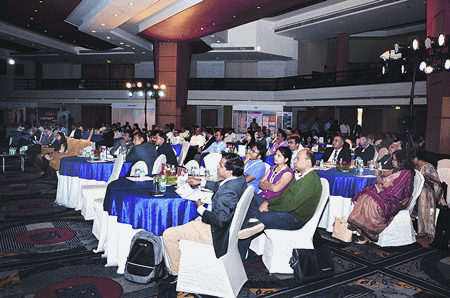


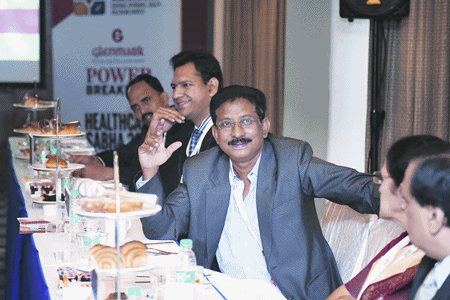


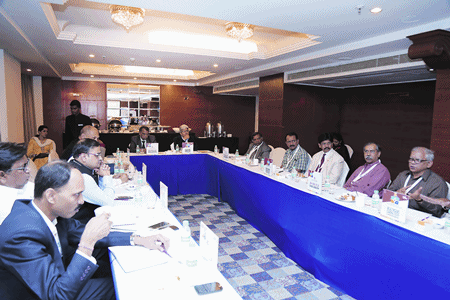

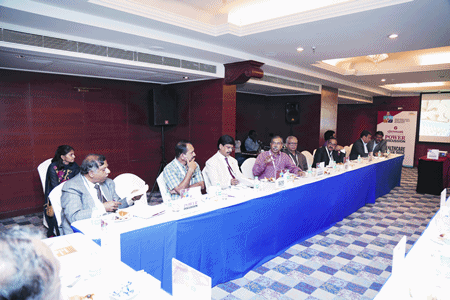








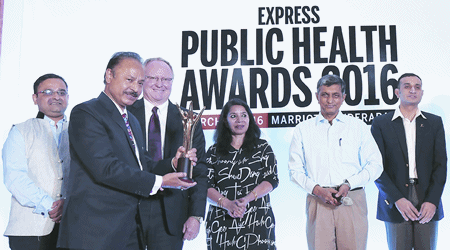




Comments are closed.